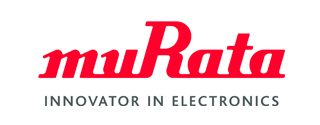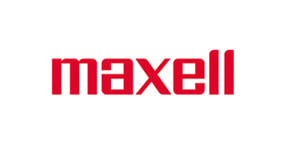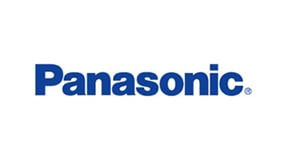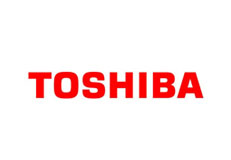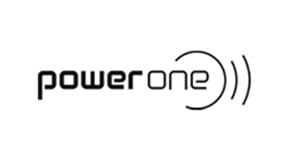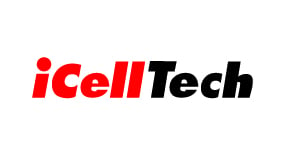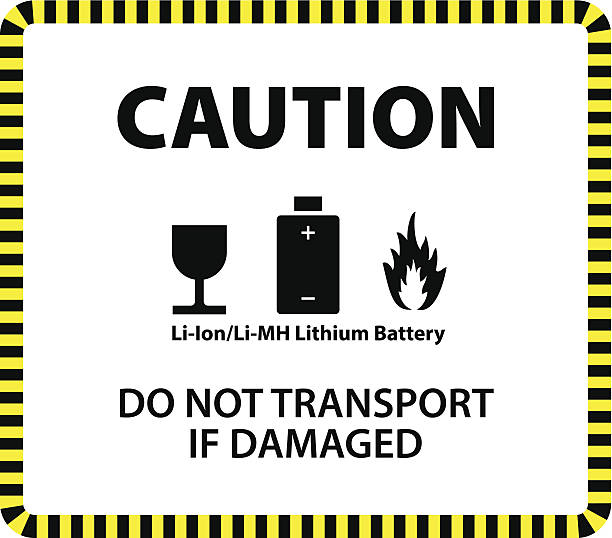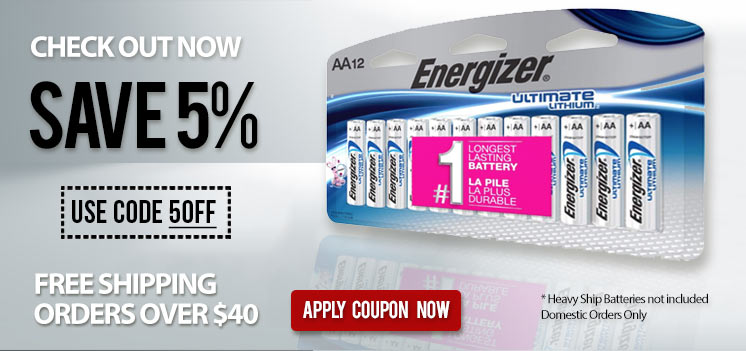Lithium Coin Cells

Lithium Coin Cells are small discs that are very small and very light, great for small, low-power devices. They're also fairly safe, have a long shelf life and fairly inexpensive per unit. However, they are not rechargeable and have high internal resistance so they can't provide a lot of continuous current: 0.005C is about as high as you can go before the capacity is seriously degraded. However, they can provide higher current as long as its 'pulsed' (usually about 10% rate).
Coin and button cells derive their names from their shape and size – thinner variants are called coin cells because they resemble coins, while thicker ones are called button cells because they look like buttons. Their size ranges from 5 to 25 millimeters in diameter and 1 to 6 millimeters in height, and they’re single cell, usually primary cell batteries, which means they are single-use and disposable. They are used to power small, portable electronics devices like the keyless entry remote for your car, laser pointers, pocket calculators, implantable cardiac defibrillators and even artificial cardiac pacemakers.
All coin cell lithium batteries consist of lithium manganese dioxide chemistries (Li-MnO2), which account for 80% of the lithium battery market. Li-MnO2 chemistry is denoted by the IEC prefix “CR”. Because it operates at 3 volts, one Li-MnO2 can replace two alkaline or silver-oxide cells, which function at 1.5 volts.Voltage can be subject to fluctuate slightly depending on the quality of the battery maker.
Every battery has a standardized name. There are multiple sets of battery naming standards, but currently the most prevalent is IEC (International Electrotechnical Commission), though others such as ANSI (American National Standards Institute) may be seen. As an example, CR2430, the letter, C denotes the battery chemistry which is Lithium. The letter R tells us the battery shape which is round. And the three or four digit reference numbers on the batteries indicate their exact or approximate size as needed --- 2032 = battery is 20mm in diameter and 3.2mm thick.
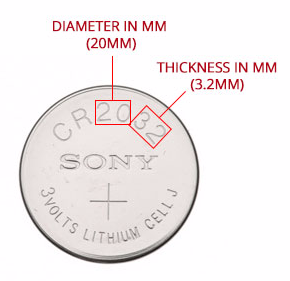
CLICK HERE FOR COIN CELL SIZE CROSS REFERENCE GUIDE
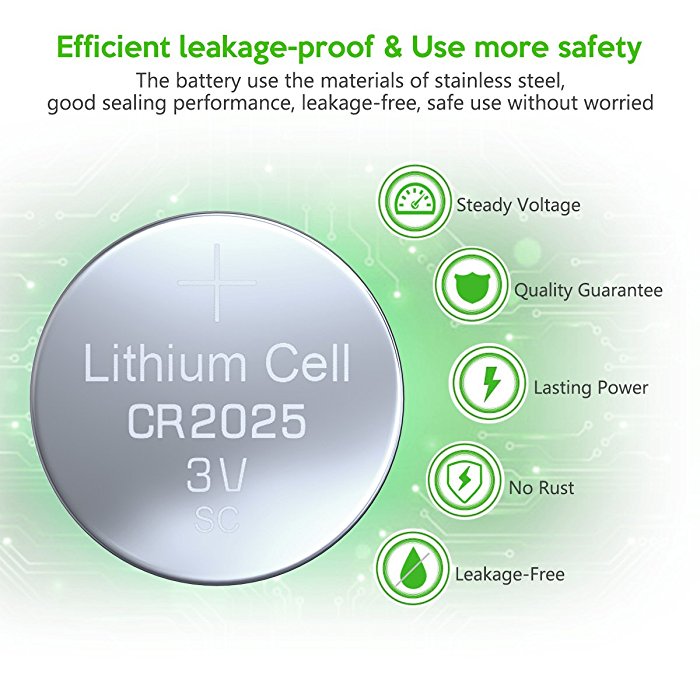
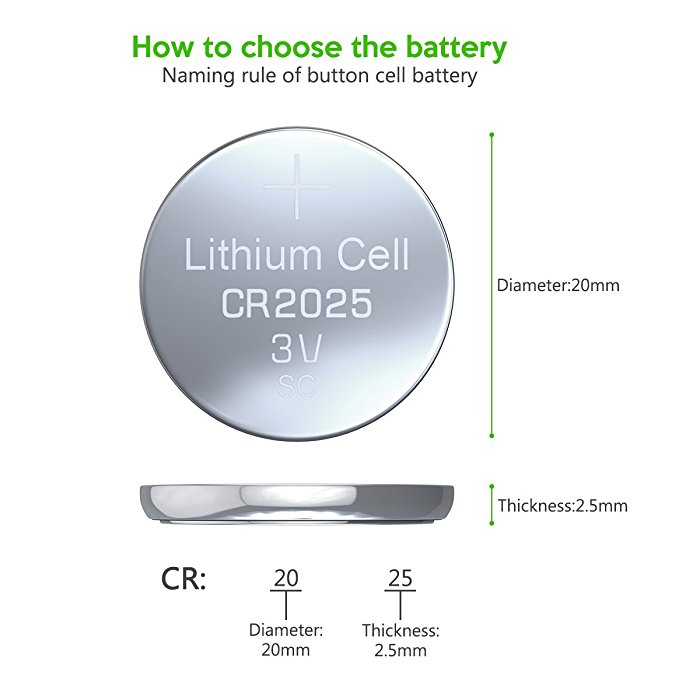
Lithium Coin Cell Brands
| ENERGIZER | MAXELL | PANASONIC | PREMIUM BATTERIES | RENATA | SONY | TOSHIBA | |
| CR1025 | √ | ||||||
| CR1216 | √ | √ | √ | √ | √ | √ | |
| CR1220 | √ | √ | √ | √ | √ | ||
| CR1616 | √ | √ | √ | √ | √ | √ | |
| CR1620 | √ | √ | √ | √ | √ | ||
| CR1632 | √ | √ | √ | √ | √ | √ | √ |
| CR2012 | √ | ||||||
| CR2016 | √ | √ | √ | √ | √ | √ | √ |
| CR2025 | √ | √ | √ | √ | √ | √ | √ |
| CR2032 | √ | √ | √ | √ | √ | √ | √ |
| CR2320 | √ | ||||||
| BR2325 | √ | ||||||
| CR2330 | √ | ||||||
| CR2354 | √ | ||||||
| CR2430 | √ | √ | √ | √ | √ | ||
| CR2450 | √ | √ | √ | √ | √ | ||
| CR2450N | √ | ||||||
| CR2477 | √ | √ | |||||
| CR2477N | √ |
How To Change Keyfob Batteries
HONDA
FORD
VOLKWAGEN
MERCEDES:
Newer Models
Older Models
BMW
CADILLAC
AUDI
JEEP
VOLVO
TOYOTA
MAZADA
DODGE
NISSAN
MINI
Lithium Coin Cell Safety -- Child Safety and Choking Hazards Precautions
![]()
Lithium button and coin cell batteries offer power in a relatively small package, which has its advantages, but these batteries can also present significant risks for young children. Due to their size, loose button/cell batteries are easy for children to pick up and swallow or aspirate. This can lead to severe injury or death within a very short period of time due to choking or tissue damage from hydroxide generated when the battery is in contact with saliva. An electrical current can form in the body and hydroxide, an alkaline chemical, can cause tissue burns that can be fatal. Most of these injuries occur in children under 4 years of age.
Ways on how we can protect our children:
> Look in your home for any items that may contain coin-sized button batteries
> Whenever possible, select batteries in child-resistant safety packaging
> Keep loose or spare batteries locked away
> Place devices out o sight and out of reach of small children
> Be mindful of toys belonging in the home that might contain button batteries
What to do in case of emergencies:
> Call the 24-hour National Battery Ingestion Hotline (800) 498-8666
> If available, provide the battery identification number, found on the package or from a matching battery
> Don't induce vomiting; don't eat or drink until the X-ray shows the battery is beyond the esophagus
> Report fever, abdominal pain, vomiting or blood in stools immediately
> In most cases, an X-ray must be obtained to determine whether the battery has passed through the esophagus into the stomach; if the battery remains in the esophagus, it must be removed immediately
Q & A
A. Is lithium explosive?
Lithium is flammable and it is potentially explosive when exposed to air and especially to water, though less so than the other alkali metals. The lithium-water reaction at normal temperatures is brisk but nonviolent because the hydrogen produced does not ignite on its own.
B. Is lithium dangerous/deadly?
Although slightly lower in energy density, the lithium-ion system is safe, providing certain precautions are met when charging and discharging. Today, lithium-ion is one of the most successful and safe battery chemistries available. Two billion cells are produced every year.
C. What happens to lithium batteries on planes?
The FAA allows electronics with lithium-ion batteries to fly in checked luggage or carry-on bags. But the FAA restricts spare lithium batteries to carry-on bags because of risk of damage while jostling.
D. Where do you put lithium batteries when flying?
Spare (uninstalled) lithium ion and lithium metal batteries must be carried in carry-on baggage only. When a carry-on bag is checked at the gate or at planeside, all spare lithium batteries must be removed from the bag and kept with the passenger in the aircraft cabin.
E. How many lithium batteries can I take on a plane?
Lithium batteries with more than 100 watt hours may be allowed in carry-on bags with airline approval, but are limited to two spare batteries per passenger. Loose lithium batteries are prohibited in checked bags.
F. How do you dispose lithium batteries?
If you are not sure if your waste facility can handle lithium ion batteries, contact them and verify if they are permitted or not. For home disposal, many stores offer free recycling of rechargeable batteries. If no outlet is available in your area, it is safe to dispose of these batteries in your regular trash.
G. How do I dispose of broken lithium batteries?
As an alternative, place the battery or device (one per bag) in a clear plastic bag and take it to your municipal household hazardous waste (HHW) recycling center. Do not place them in the trash for any reason.
